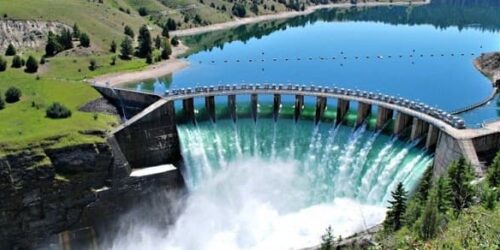Hydropower, the “forgotten giant” of low-carbon electricity, will need major policy support to help accelerate the expansion of solar and wind power and put the world on track for net-zero goals, the International Energy Agency (IEA) said on Wednesday.
Hydropower currently provides one-sixth of global electricity generation and is the single largest source of low-carbon power—and more than all other renewables combined, the IEA estimates.
In 2020, hydropower was the third?largest electricity generation source after coal and natural gas, the Paris-based agency said in its first report on this energy source, Hydropower Special Market Report.
Global hydropower capacity has jumped by 70 percent over the past 20 years, but its share of electricity generation has remained stable because of increased generation from wind, solar, natural gas, and coal-fired capacity, according to the IEA.
This decade, hydropower capacity worldwide is forecast to rise by 17 percent, driven by China, India, Turkey, and Ethiopia. However, the projected growth for this decade is nearly 25 percent slower than the expansion in the previous decade, the IEA said.
Governments need to enact strong policy actions to reverse the slowdown in hydropower growth, the agency said.
“Hydropower is the forgotten giant of clean electricity, and it needs to be put squarely back on the energy and climate agenda if countries are serious about meeting their net zero goals,” the IEA Executive Director Fatih Birol said in a statement.
“Hydropower’s advantages can make it a natural enabler of secure transitions in many countries as they shift to higher and higher shares of solar and wind – provided that hydropower projects are developed in a sustainable and climate-resilient way,” Birol added.
Yet, recent major hydropower projects, including the world’s second-largest hydropower dam in China, have met resistance from environmentalists, while drought conditions could severely affect hydropower output. Case in point: a more severe than usual drought in California this year has depleted reservoirs and lakes, including the ones feeding some of the largest hydropower facilities, putting the state again at risk of power outages during heatwaves this summer.





